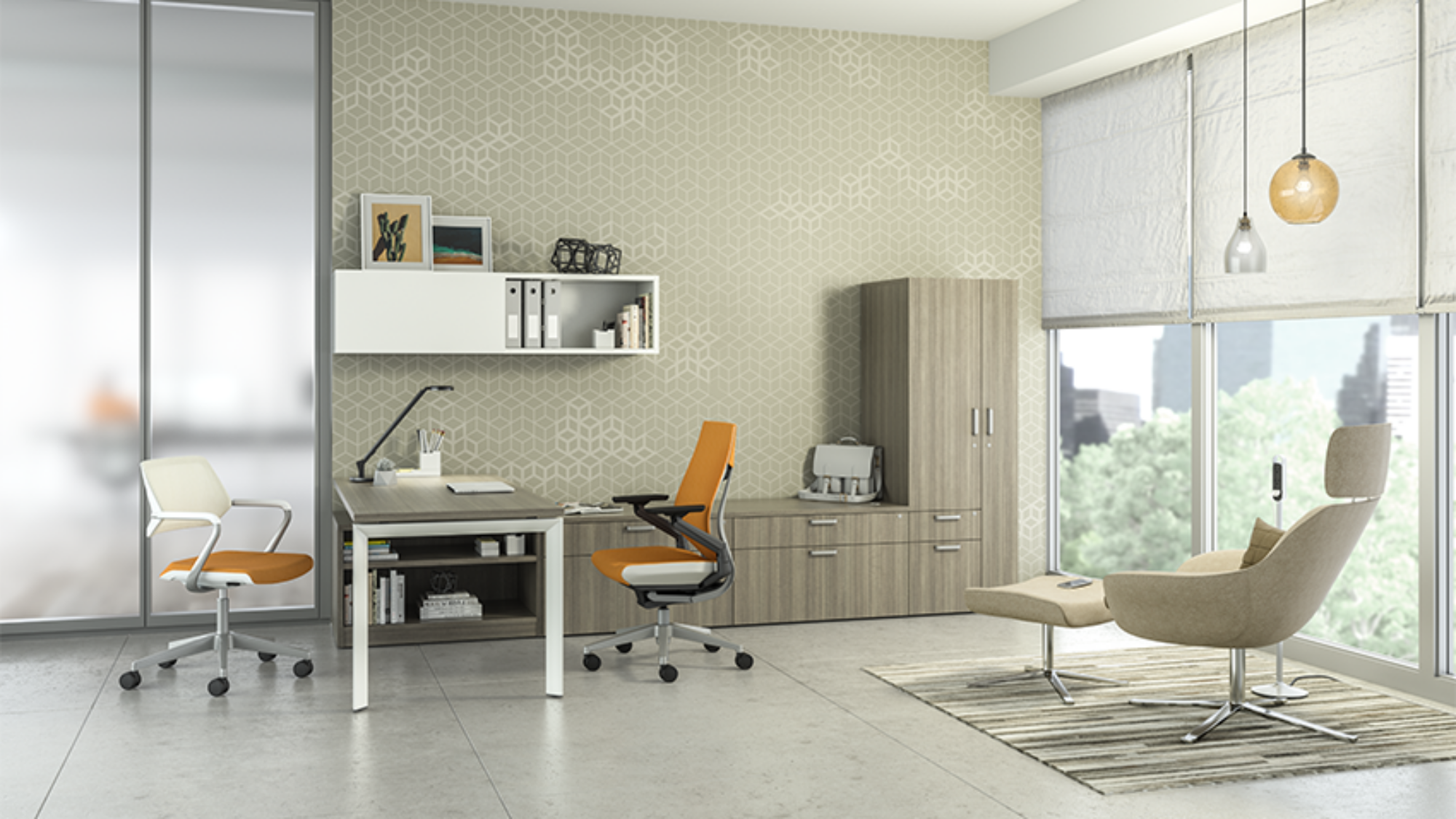Imagine an office space that puts you at ease and makes you feel valued, productive and engaged from entry to exit. Now consider someone very different from you – would they experience the space the same way? Would they feel accommodated or excluded, connected or discouraged by unseen barriers?
More than ever before, organizations are connecting their inclusivity goals with the design of the workplace. Creating inclusive spaces, where employees feel a greater sense of belonging requires celebrating and building upon what is working well, while also critically examining who feels left out.
When we set out to create inclusive spaces, products and experiences, we intentionally co-create with people who have experienced exclusion, by reaching out to what Steelcase Culture and Diversity consultant Mary Brown calls the ‘unusual suspects.’ “Working alongside unusual suspects should make you question how space and culture impact someone’s life which differs from you,” says Brown. “It’s about seeking people, and perspectives that challenge the status quo.”

1. Start with an inclusive design mindset that breaks down barriers.
While most leaders and designers agree they want to create inclusive spaces, many do not have a shared understanding of what that means or how to begin.
Inclusive design requires us to go beyond codes and compliance to see the role identity and bias play in decision making. Engaging the perspectives of people from different socioeconomic backgrounds, races, disabilities, ages, sizes, and genders, or who identify as neurodivergent, adds value to any project. It’s less about reaching a perfect outcome and more about uncovering barriers with unheard voices to drive innovation.
Signals of Inclusive Design
It can be difficult to pinpoint what makes a space great, but people instinctively identify shortcomings and potential barriers.
2. First Impressions
As you walk into space, you are welcomed by signage, thresholds, furniture settings, sounds, smells, artifacts, and artwork that set the tone and signals who belongs – and possibly who does not. The best way to attract diverse, dynamic community of people is to ensure they feel seen, supported, and accommodated as they enter. Does artwork reflect the community? Are there touchdowns and accommodations for people with functional limitations? Does signage use symbols to help everyone navigate How are hypo- and hyper-sensitivities impacted as people enter? These questions drive new possibilities.

3. Diversity of Settings
When people think of traditional office spaces, they tend to imagine spaces with the same workstation repeated over and over. While this may create a sense of equality, it doesn’t show how people work differently and how our needs vary. Inclusive workplace neighborhoods feature a diversity of postures, boundaries, and intentional adjacencies. Provide places for everyone to be productive, without sacrificing equity and forcing one-size-fits-all.
4. Range of Furniture + Technology Solutions
A range of solutions enables different groups of people to share the same space in different ways. Seating diversity that supports visual consistency, while offering choice in firmness and arm rests ensures everyone is comfortable. Diverse table shapes and heights – with space to approach – provide everyone with a seat at the table. Accessible writable surfaces that can move and adapt encourage community building, collaborations and wayfinding. Don’t forget about power that’s easy to access, without crawling or bending under furniture. These choices provide dignity and allow everyone to contribute.
5. Spatial Perception + Sensory Control
Control over your environment can be tough to find in the office, but it is possible. When designing for neurodiversity, we encourage user sensory control, which has proven to enhance the spatial experience for everyone. Have you identified areas for focus, or no technology? What about flexible sensory spaces that support rest and rejuvenation? Or reservable hoteling stations where people can control visual privacy, lighting, noise, and ventilation? If the answer is no, your space could do more to be inclusive.
The Takeaway
While inclusive design offers many opportunities, we acknowledge that this work can be challenging – especially for strong advocates. “Even when you have a heart for inclusion and innovation, it can be incredibly taxing to be the go-to person for a perspective,” says Brown. As we navigate our ever-changing world, inclusive design serves as an intervention to challenge exclusion, and build informed and impactful spaces to work, learn, heal and ultimately live better.
Receive our Newsletter
To receive our newsletter, including new editions of spaces and other digital content, fill out the form:



